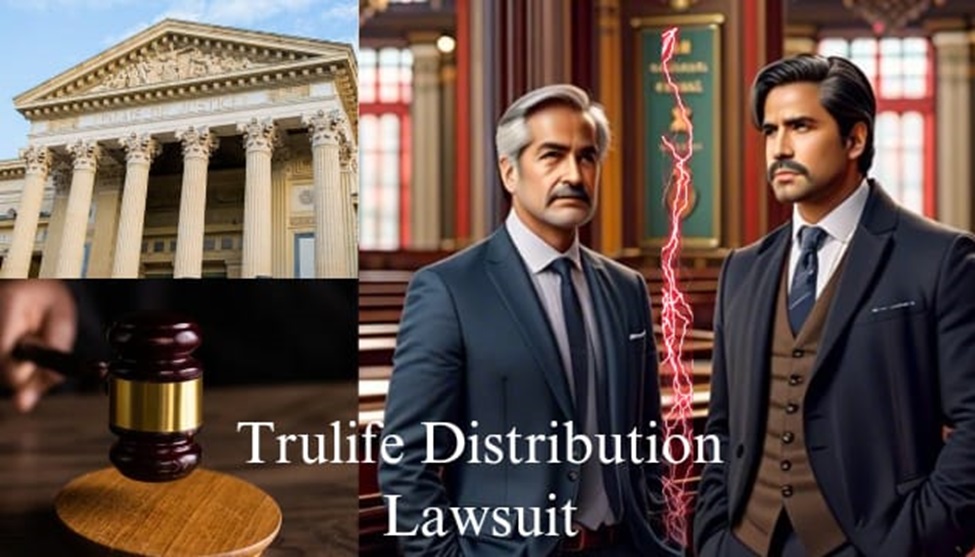The Judge Cory Atkins case becomes the landmark case in the fight for transgender rights, taking the national eyeball. The case mainly involves R.M.A., a transgender student, suing the Blue Springs School District in Missouri on allegations of sex discrimination. This case marked a particular moment within the transgender community because it posed the question of whether laws like the Missouri Human Rights Act would protect the rights of those individuals based on the identity of their gender. Years of legal battles highlight the struggles transgender people have regarding equality and fair treatment.
This case encompasses broader social debates over the issue of inclusion and justice. Its initial jury verdict in favor of R.M.A. means a win for transgender rights advocates, but Judge Cory Atkins’ ruling to overturn it has ignited controversy again. The case perfectly captures the tension between the interpretation of law by courts and emerging social sentiments, making it a do-or-die moment for the equality cause.
Headline of the Case
The case brought to light transgender students’ desire for equal opportunities in school and brought stern questions on the existence of discrimination and protection under the law.
Who is Judge Cory Atkins?
Judge Cory Atkins of the Jackson County Circuit Court of Missouri is known for landmark decisions. His work is appreciated for its insight and, in many cases, guides public opinion.
In 2015, the case was brought by R.M.A., a transgender student, against the Blue Springs School District. Without access to male locker rooms and bathrooms with this denial, he argued, it was discriminatory. This was one of the only cases that reached the Missouri courts. R.M.A.’s case questioned whether the school violated the Missouri Human Rights Act. He argued that being denied access to male facilities because of his gender identity made the action sex discrimination.
Read also: Trulife Distribution Lawsuit: A Family Dispute in US Court
The Jury’s Preliminary Verdict
The jury gave a verdict for R.M.A. In this way, there was a scope for the transgender fighting to come up through court orders. This proved that discrimination could be handled judicially.
Justice to R.M.A.
On June 20, 2022, the jury pronounced the verdict for R.M.A. They awarded him $175,000 for compensatory damages that he had faced due to discrimination. The jury ordered $4 million in punitive damages, proving that the case against the school did not go without consequences.
Why It Was Historic
This judgment elicited widespread jubilation throughout the country. Advocate groups accepted it as a landmark victory for transgender rights. It was a strong message of why the law should provide legal protections to at-risk communities.
Judge Cory Atkins Overturns Judgment
The jury’s verdict was short-lived, as Judge Cory Atkins overturned the judgment, much to everybody’s shock. His decision caused colossal controversy and brought heated public debates to a boil.
A Shocking Plot of Surprises
The judgment of Judge Atkins shocked everyone. It nullified the $4.2 million award and threw more mixed messages into the judicial process. The transgender advocacy groups felt disappointed and said the judgment rolled back the steps taken forward by the jury verdict.
The Foundation of the Ruling
Judge Atkins candidly explained his reasoning. He held that the denial to R.M.A. on biological accounts and not on account of his transgender identity was permissible. The judge then further ruled that there was a lack of proof that the acts were discriminatory against R.M.A. because of his male identity. This interpretation has been severely criticized for failing to take into account the lives and experiences of transgender persons.
The Legal Debate Heats Up
The ruling reignited debates about the scope of anti-discrimination laws. It also highlighted the intricacies and subtleties of judicial interpretation in a transgender rights case.
Missouri Human Rights Act Questions
The case made much of the Missouri Human Rights Act. Even though it defines provisions for protection from sex discrimination, it is vague on the application of transgender rights. According to legal experts, such provisions dealing with gender identity issues should be clearly defined to avoid such ambiguities in-laws.
Earlier Decision of the Supreme Court
The Missouri Supreme Court rehabilitated R.M.A.’s case in 2019. Based on this decision, the court held that protections against sex discrimination could be available to those who do not fit within the patriarchal notions of gender. This earlier opinion thus set a positive precedent: it told transgender rights activists they could expect a more comprehensive legal victory.
The Bigger Picture
The Judge Cory Atkins case is not a single case in terms of its legal nature. Instead, it explains the plight of transgender people in the whole country.
What It Means for the Future of Transgender Rights
This case brought into the public arena issues concerning transgender students in schools and primarily presented the problem that schools were supposed to have policies that make a place inclusive for all. However, most schools did not have such frameworks, which caused this situation.
Advocacy Groups Criticize Judge Atkins
Advocacy groups protest the judge’s decision. The ACLU and Lambda Legal claim the decision has disastrous precedent. It revives time-warp mythology and fails to recognize that, indeed, transgender people need more protection.
The Appeal: A Fight for Justice
The ruling is expected in January next year. The lawyers defending R.M.A. said they would appeal. It may be a legal milestone, after all.
What R.M.A.’s Lawyers Will Do in Appeal
R.M.A.’s lawyers decided to appeal Judge Atkins’s decision. They argued they were still on the case because they deemed the jury’s original verdict suitable. And so, they will fight on the issues of transgender rights to be accorded proper and rightful recognition by the law.
The Future End
This case is far from over. The appeal is likely to go up the judicial hierarchy and may even shape future decisions regarding the rights of transgender people. Supporters of the case are confident that it will eventually translate to more excellent protection for weak sections of society.
Public Opinion and Media Coverage
Public opinion and media coverage have gone a long way in shaping this case.
Mixed Reactions Among the Public
Public opinion is still divided over the decision by Judge Atkins. Proponents of the ruling argue it falls under the proper legal order. In contradistinction, there is an argument that it marks a step back in the quest for equality. The widely polarized responses accentuate the extreme views in US society regarding transgender issues.
Media Spotlight on the Case
Major news organizations widely covered the case and even became a symbol of the fight for transgender equality. Often, the arguments and discourses regarding the case are more systemic needs and place of the judiciary in advancing societal change or stagnation.
Key Takeaways from the Judge Cory Atkins Case
This case sheds substantial light on the status of transgender rights, the system of law, and its impact on social mores.
Legal Protections
The case has brought to light a lot about the need for complete legal protections for transgender individuals. Laws enacted currently have many loops and gaps that lead to discriminatory steps. Policymakers should touch on these issues and gaps to provide equal opportunities for everybody.
Role of Judicial Interpretation
This proves that judicial interpretation has the power: the exact law on paper may have different results based on different perceptions of individual judges. It presented the case here, demonstrating the need for well-defined, uniform law standards.
Conclusion: What’s Next After the Judge Cory Atkins Lawsuit?
The Cory Atkins case has become a landmark case in the fight for transgender rights. How it finally plays out will raise important questions about fairness, justice, and the law’s role in protecting marginalized communities. It will depend on the appeals process as to whether the current ruling prevails over the original jury verdict.
Regardless of the result, this case left a profound impression on equal rights debates. It showed the level at which transgender people have been affected and how much more still has to be done to begin to embody that sense of inclusion.


